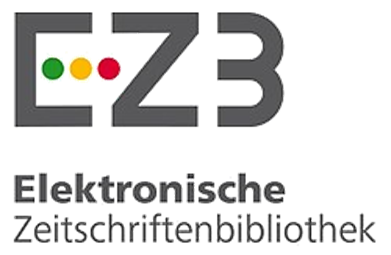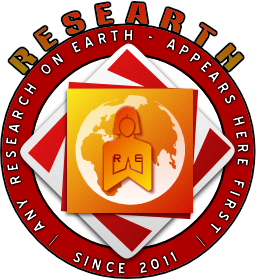Study and Analysis of Optimized Site-selection for Urban Green Space by Using Fuzzy logic
Case Study: Seventh Region of Ahvaz Municipality
DOI:
https://doi.org/10.51611/iars.irj.v2i2.2012.23Keywords:
Ahvaz, Fuzzy logic, Green Space, Site-SelectionAbstract
Public land-uses in many cities are not able to present desirable services to citizens because of some problems such as high population density, lack of regularity in establishment and site-selection, and lack of attention to accessibility radius and population thresholds. This problem is magnified in big cities especially for land-uses such as green spaces. In urban supplying services only increasing of services is not a reason for proper supplying services but more important is optimized distribution of these centers. In this regard, present paper based on descriptive-analytical method as well as GIS follows optimized distribution of green space in the cities according to site-selection principals of urban green space. Case study is region 7 of Ahvaz municipality which has a population of 150215 persons and 2.78 green space capita, and this amount in addition to significant difference to standards determined by environment united nations (20-25 for a person), has been not distributed optimally. Regarding this city locating warm and dry zone of the earth, it is very important to select an optimized site for green spaces .Hence, in order to select a proper and optimized site for the green spaces according to site-selection principals layers (criteria) such as vicinity to residential centers, educational centers, cultural centers, urban infrastructures and establishments, commercial centers, hygienic centers, industrial centers and wastelands and etc. have been used. Research results in fuzzy logic valued region lands based on their importance in recognizing optimized location. Afterward, these lands were compared with land-use map and it was distinguished that lands with very good, good, and medium degree were placed close to residential, cultural, and educational centers which had more governmental ownership, and lands with weak and very weak degree were placed far from compatible land-uses, and were more placed close to industrial, administrative, hygienic sportive, and commercial centers which often had private ownership, therefore, they were not suggested for creating green space.
Downloads
References
K. Suzanchi, and F. Behforuz, “Technical office of harmony assistance of reclamation affairs,†Iran ministry publications, pp. 5, 2001.
A. Pur Ahmad, A. Pursaraskanrud and M. Sotudeh, “Urban green space management of Tehran municipality 9th region, Human Geography Researches, no. 69, year. 41, pp. 31, 2009.
A. Esmaeeli, “Analysis of urban parks from viewpoint of urban planning approach (case study: region 1 and 8 of Tabriz),†M.S. thesis, Univ., Tarbiat Modares, Tehran, Iran, p. 11, 2003.
Shiri, “Presentation of optimized site-selection of urban green space by using GIS, case study: urban parks of Zanjan,†M.S. thesis,Univ., Zanjan, Iran, p. 32, 2006.
H. Majnunian, “Arguments surrounding parks, green space, and promenades,†urban service assistance of park and green space, Tehran, summer, p. 6, 1995.
E. Zangiabidi and Mokhtarie malekabadi, “Cities, green space, and new approach to human design dimensions,†Payame sabz journal, no. 42, 2005.
E. Shieh, “An introduction on urban planning principals, science and industry university publications, Tehran, Iran, no. 67, pp. 173-179, 1990.
A. Saeednia, Green book municipality, Studies and urban planning center, Iran ministry publications, vol. 9, p. 83, 2000.
Housing and urbanization,comprehensive scheme Ahvaz, Iran, 2006.
Programming assistance of Khuzestan governor, Khuzestan province yearbook, census and information of Iran ministry, 2006.
A. Ahmadi, A. Movahed, A Shojaian, “Presentation of optimized site-selection of urban green space by using GIS (case study: 7th region of Ahvaz municipality)â€, scientific and research journal of environmental preparation, no. 15, Malayer university, winter, p.6, 2011.
S. A. Hossaini, “Study of educational land-uses in Tehran city and presenting proper pattern,†M.S. thesis, Univ., Taarbiat Modarres, Tehran, Iran, p. 41, 2001.
H. R. Varesi,†Urban green space site-selection by using geographical information system (case study: Korram abad city),†Geography and regional planning journal, no. 10, Spring and Summer, p. 93, 2008.
M. Farajzadehasl, and S. Hushang, “Management and site-selection of educational centers by using geographical information system,†geographical researches journal, no. 67, p. 8, 2002.
Eastman, J.R. IDRISI for windows users guide, version 3.2, Clark labs for cartographic technology and Geographic Analysis, Clark University, 1997.
K. Valizadeh and H. Shahabi, “Necessities of GIS Usage in urban water management At The Time of Natural Accidents (Case Study: Saghez City),†International Conference on Geographic, Paris, France, 2009.
A. Ahmadi, “Tourists optimal path-finding by GIS (Case study: historical texture of Sanandaj)â€, 5 th Symposium on Advances in Science & Technology, 5thSASTech ,May, Mashhad, Iran, pp. 12-17, 2011.
H. Shahabi, “The role of geomorphic factors in site-finding of urban waste burial in Saghez using GIS models and remote sensing technology,†M.S. thesis, Univ., Tabriz, Iran, 2009.
Downloads
Published
Issue
Section
License
Copyright (c) 2012 Atefe Ahmadi, Nahid Sajadian, H. Jalaliyan, Narges Naghibirokni

This work is licensed under a Creative Commons Attribution 4.0 International License.
Author(s) hold complete right on the content of this article. Copyright to the content are governed as per Copyright Policy of the Journal.





















